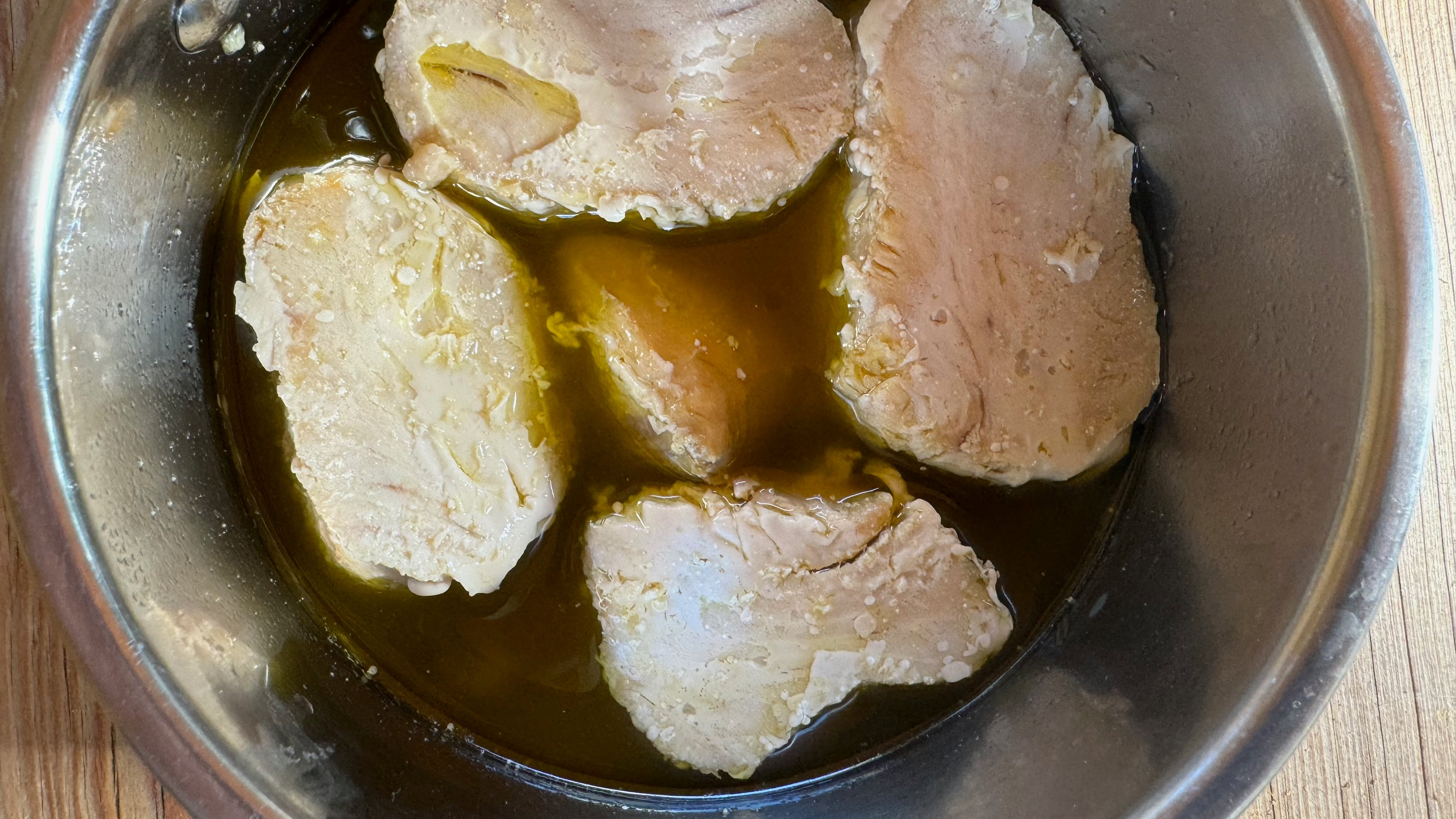Jim Dixon wrote about food for WW for more than 20 years, but these days most of his time is spent at his olive oil-focused specialty food business Wellspent Market. Jim’s always loved to eat, and he encourages his customers to cook by sending them recipes every week through his newsletter. We’re happy to have him back creating some special dishes just for WW readers.
While salmon may be the iconic fish of the Pacific Northwest, the albacore tuna caught just offshore deserve some local love, too.
From early summer into fall, better fish markets offer fresh albacore from the young fish that have migrated across the ocean from the waters off Japan, and the little torpedoes can swim as fast as 50 miles per hour. (The fillets are often called loins since they have the same shape as a pork loin, but only humans and quadrupeds actually have loins.) Since the local pole-and-line-caught albacore are small, they have less mercury than the big tuna that end up in cans, and the Monterey Aquarium’s Seafood Watch rates them a “Best Choice.”
The meaty fillets grill nicely, and albacore makes great poke, but my favorite way to cook them is gently poached in olive oil. The tuna emerges silky and tender, and the olive oil adds even more flavor. Eat the cooked fish warm or at room temperature, or combine it with beans for an even better version of the classic Italian fagioli e tonno, usually made with canned tuna. If you have any leftover oil, use it to make the Italian tuna mayonnaise called tonnato.
Ingredients:
1 or 2 fresh Pacific albacore fillets, aka loins
Extra virgin olive oil
Cut the tuna across the grain into even, roughly 2-inch-thick slices. Place the slices in a single layer in a small saucepan, then add enough olive oil to come about halfway up their sides. Use tongs to gently lift the fish so some of the oil gets underneath.
Gently heat the pan until small bubbles appear in the oil. Carefully turn the fish pieces over, cover the pan, and take it off the heat. Leave the fish in the hot oil for another 30 minutes or so. Eat immediately or store the fish, covered in the poaching oil, in the refrigerator for several days.
